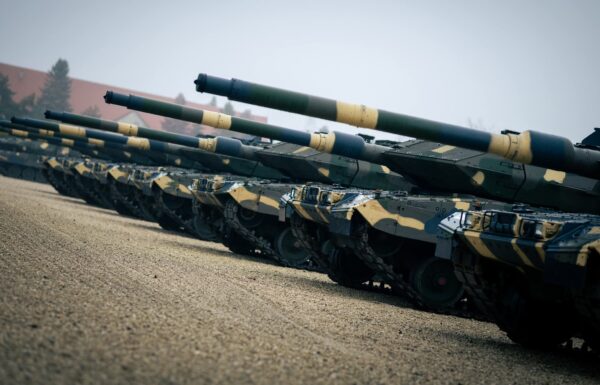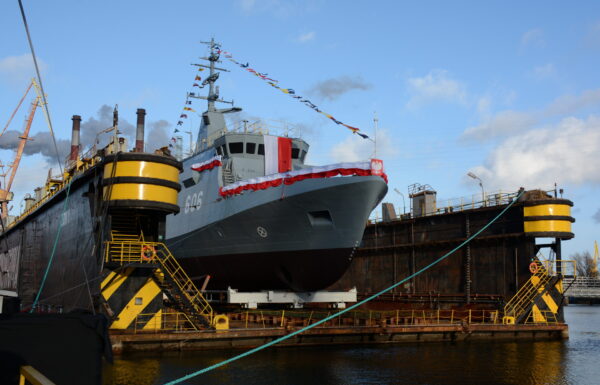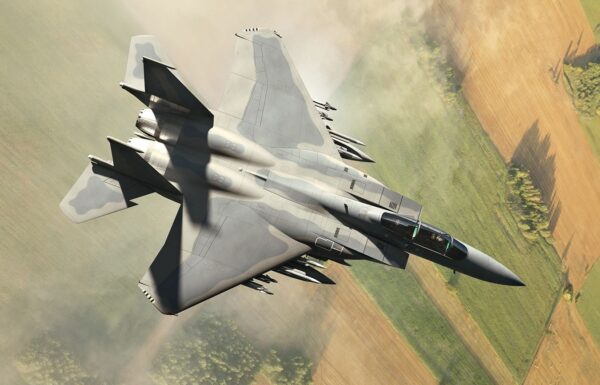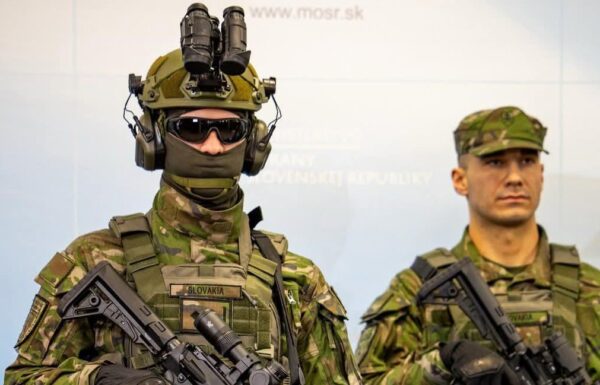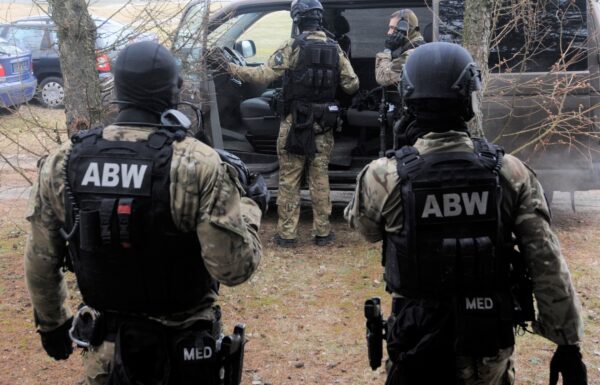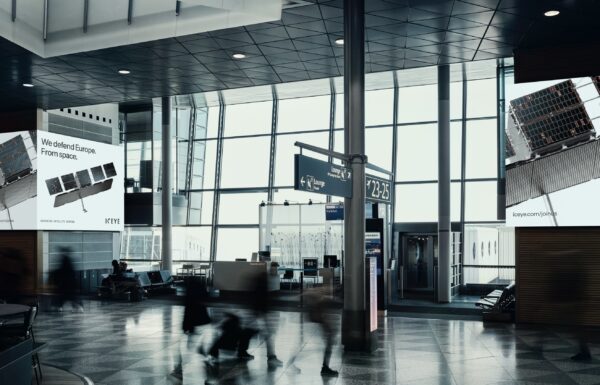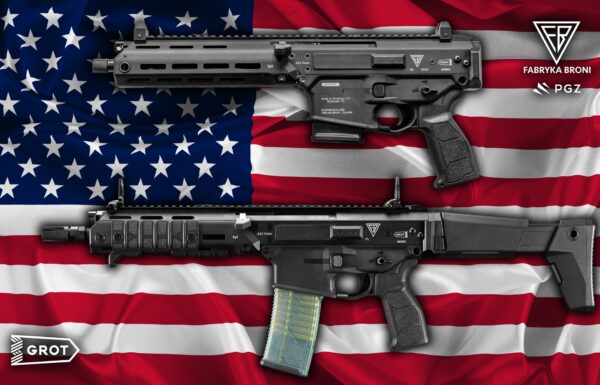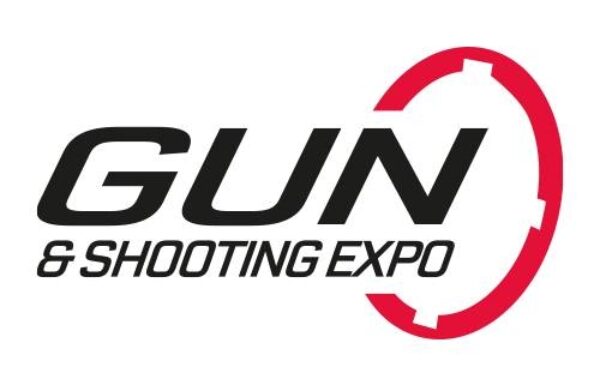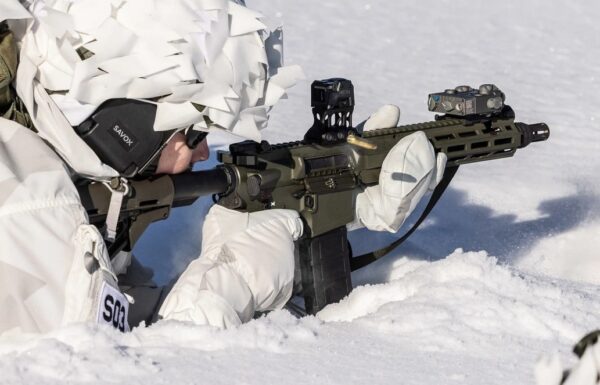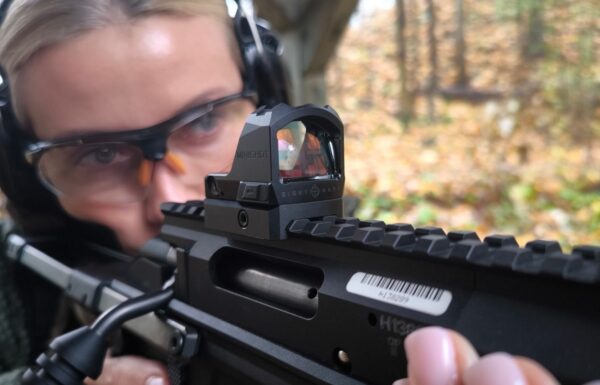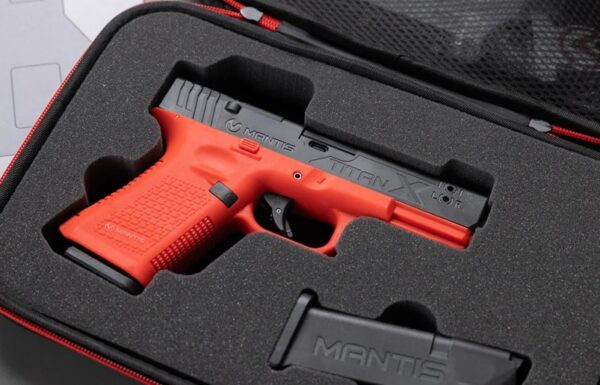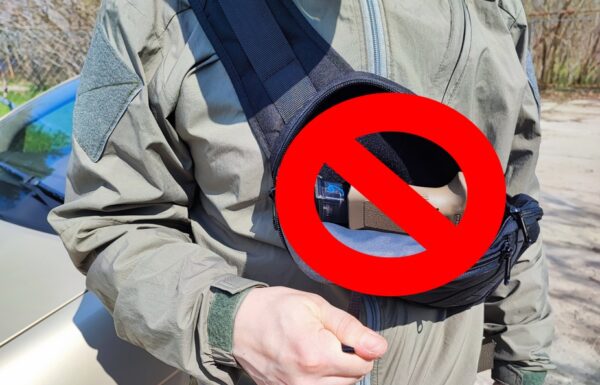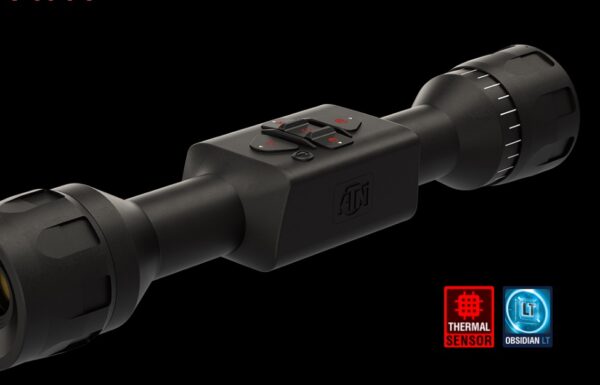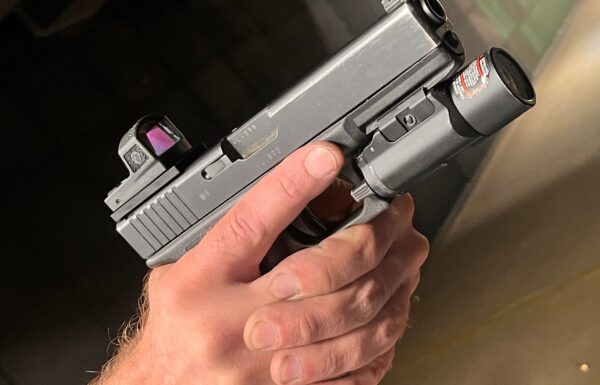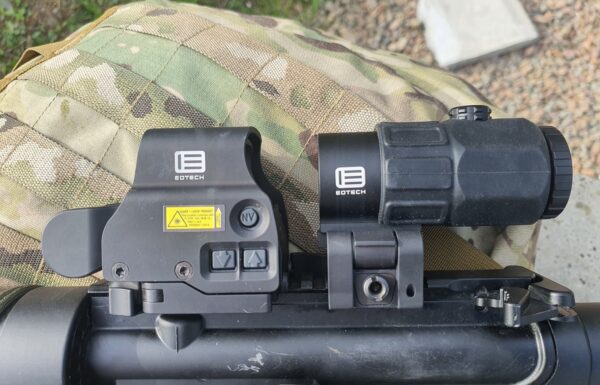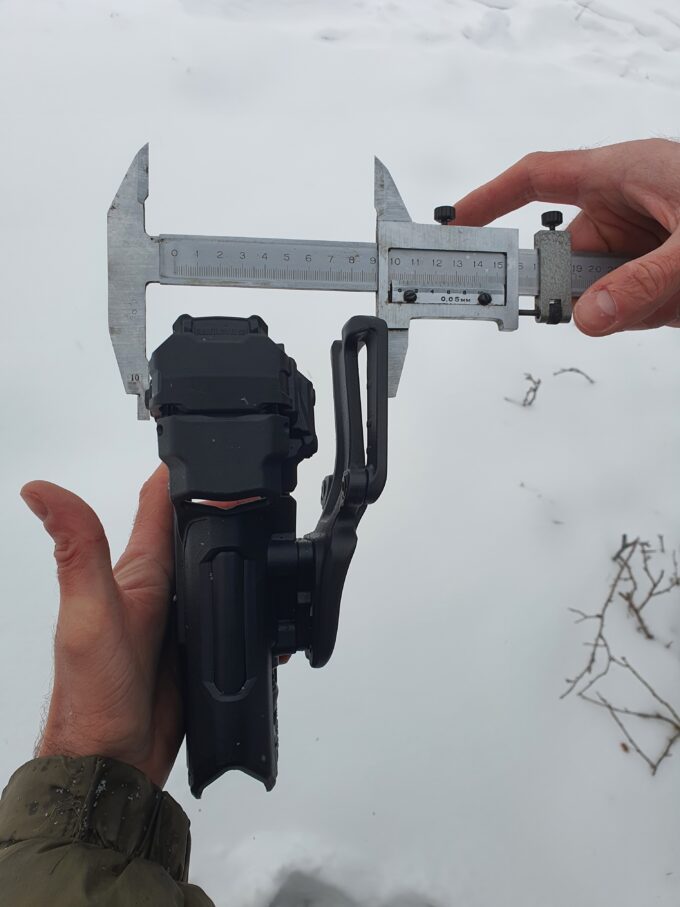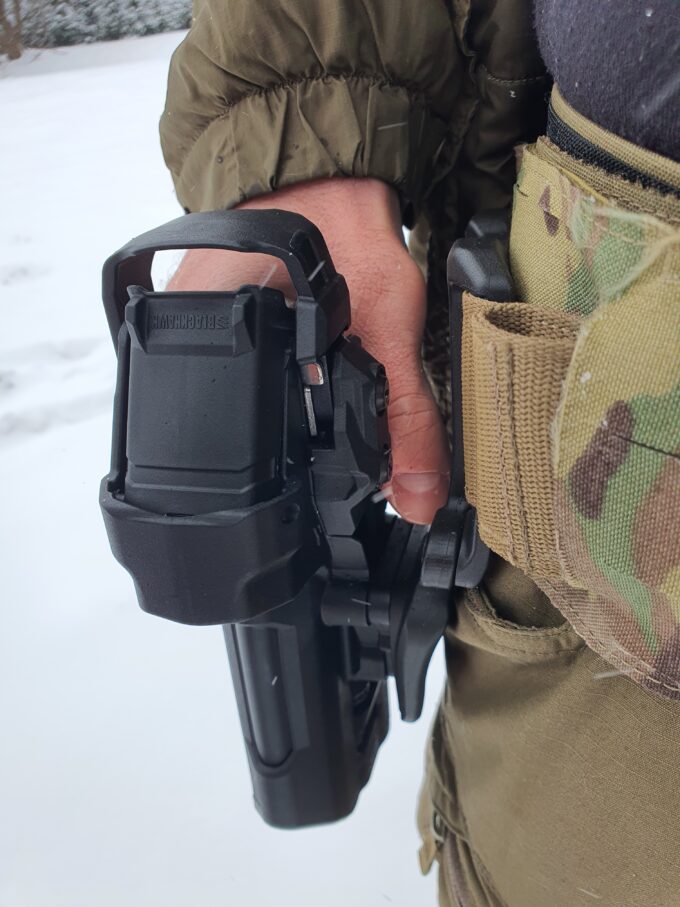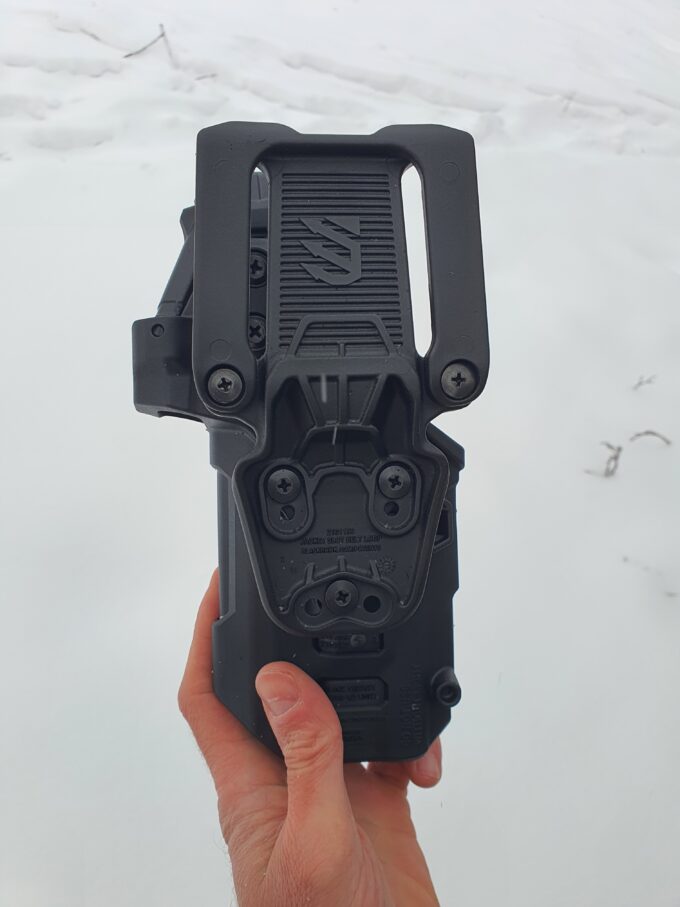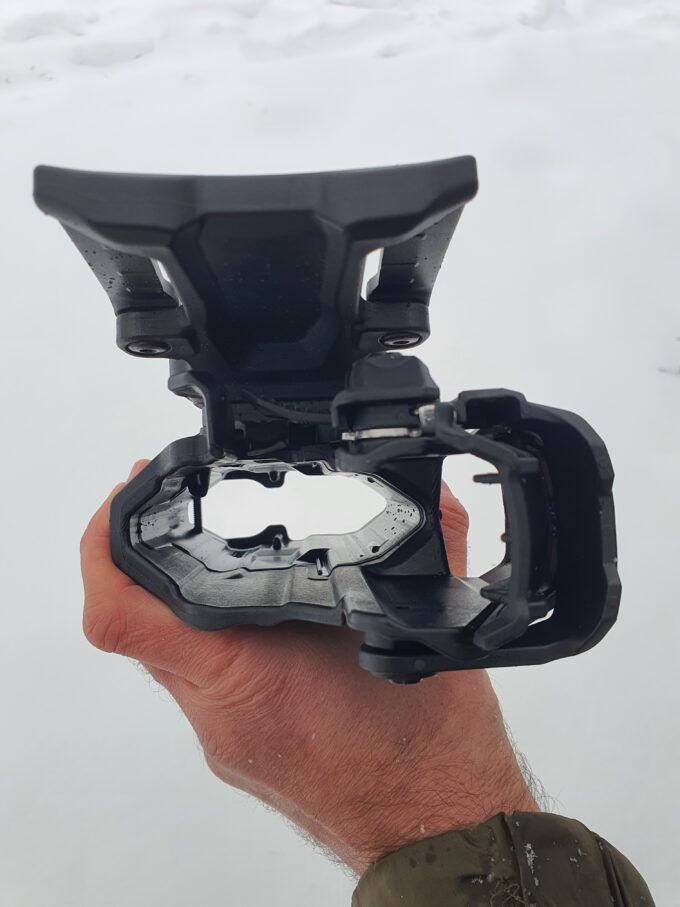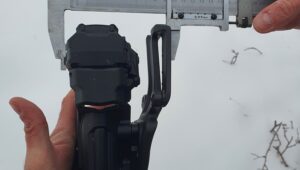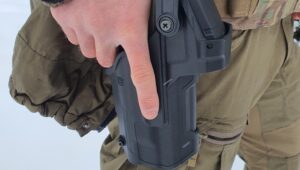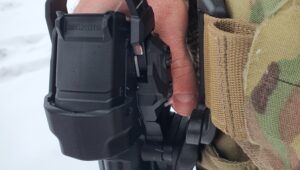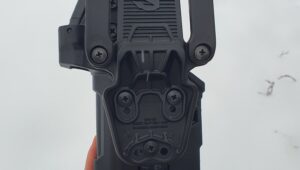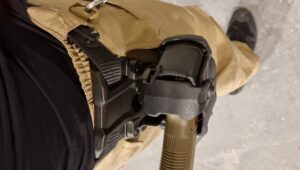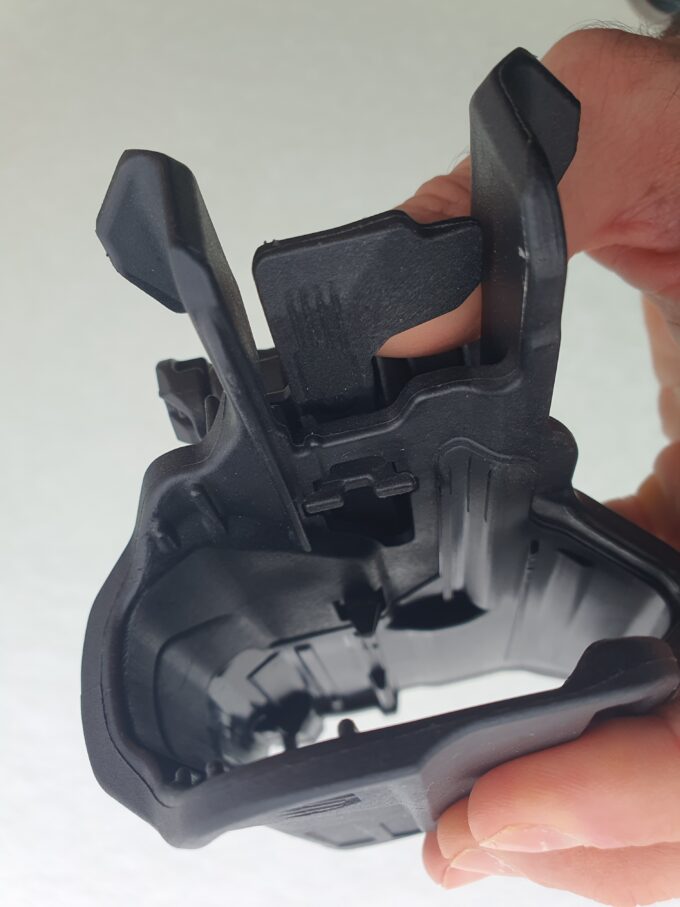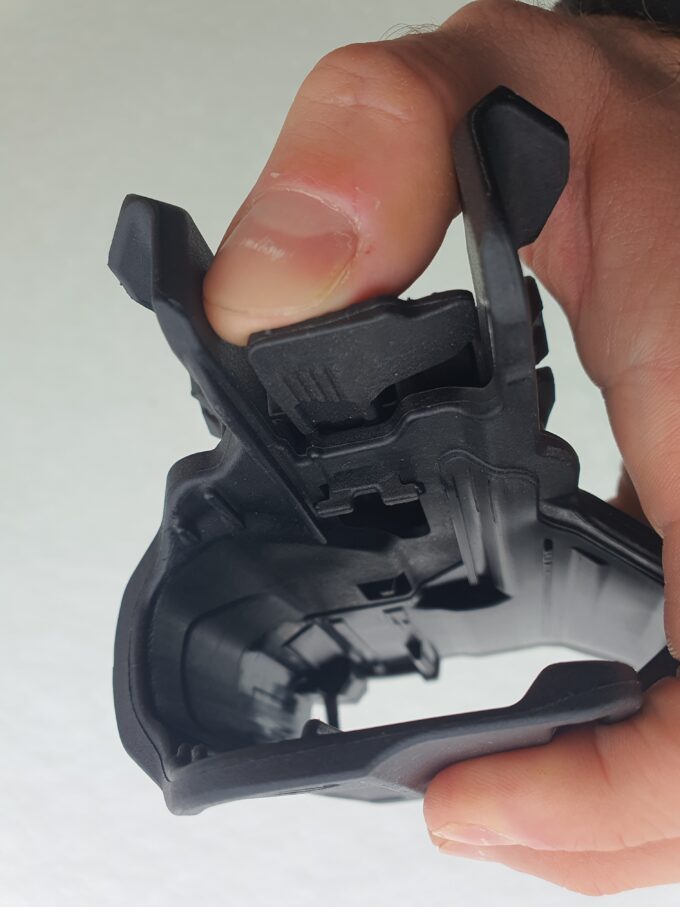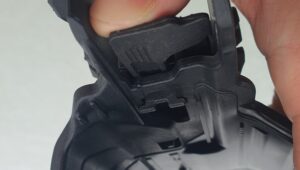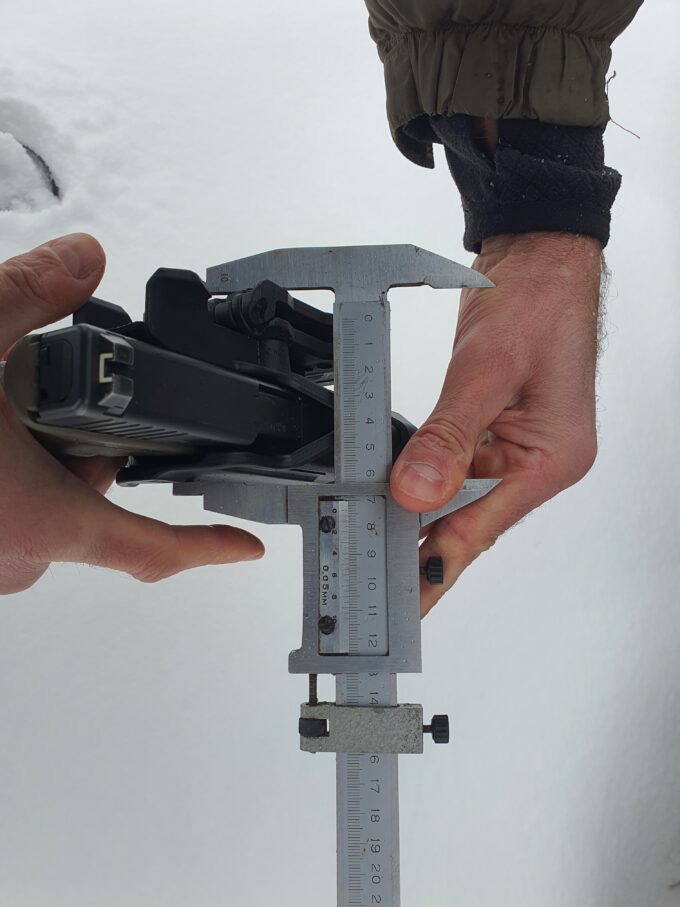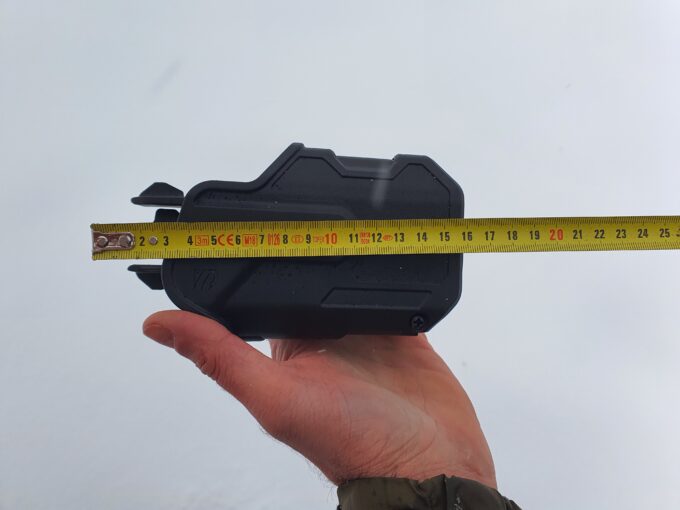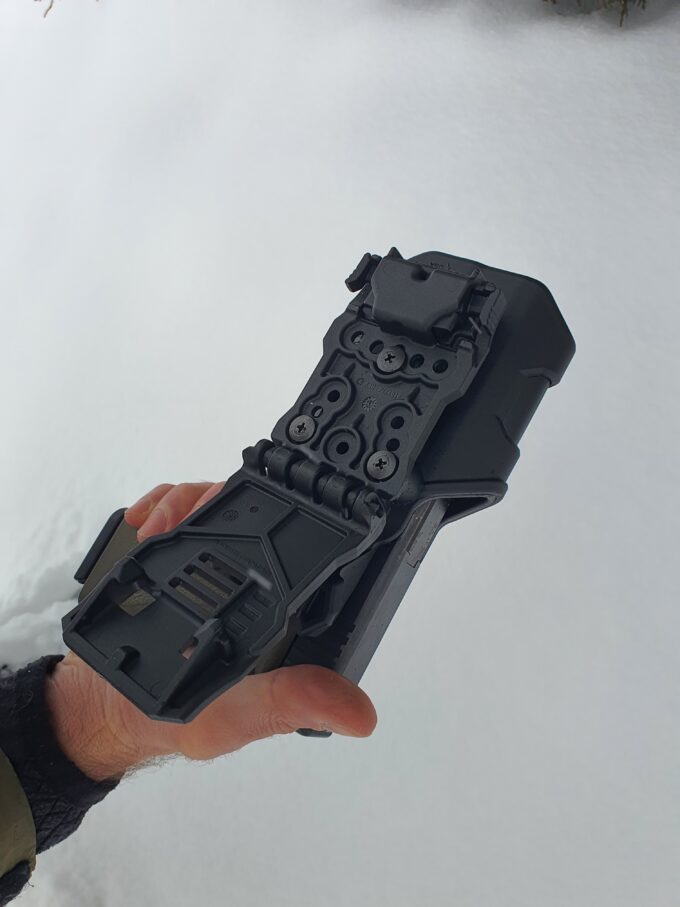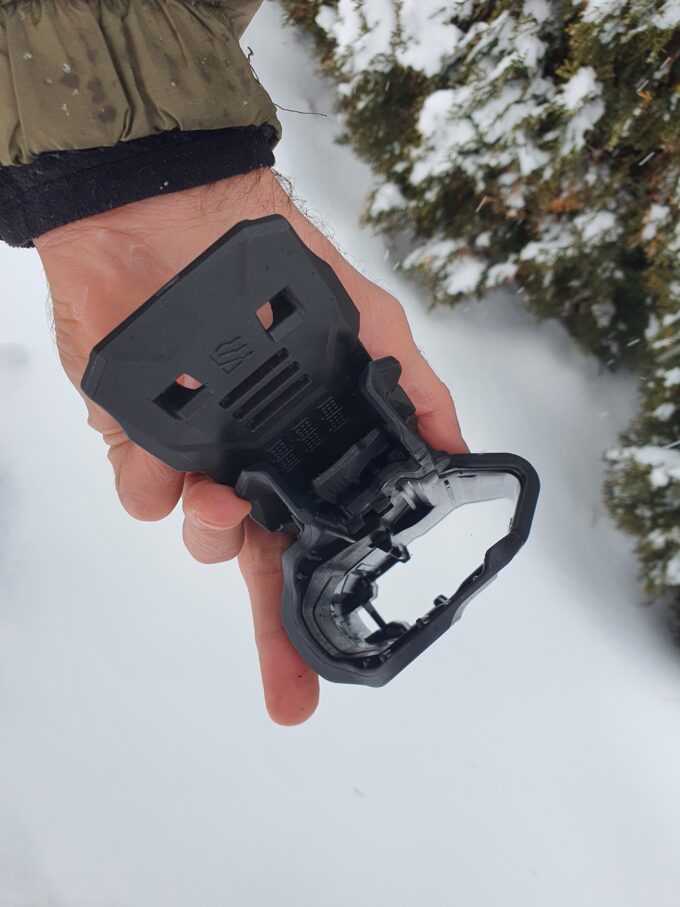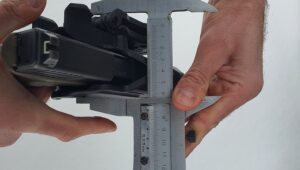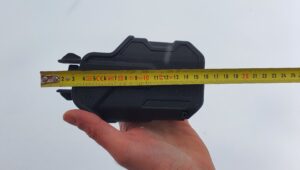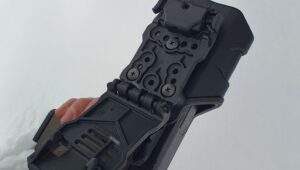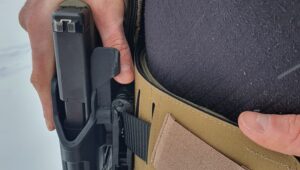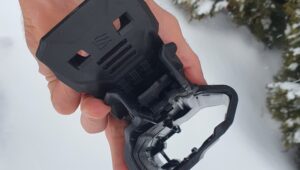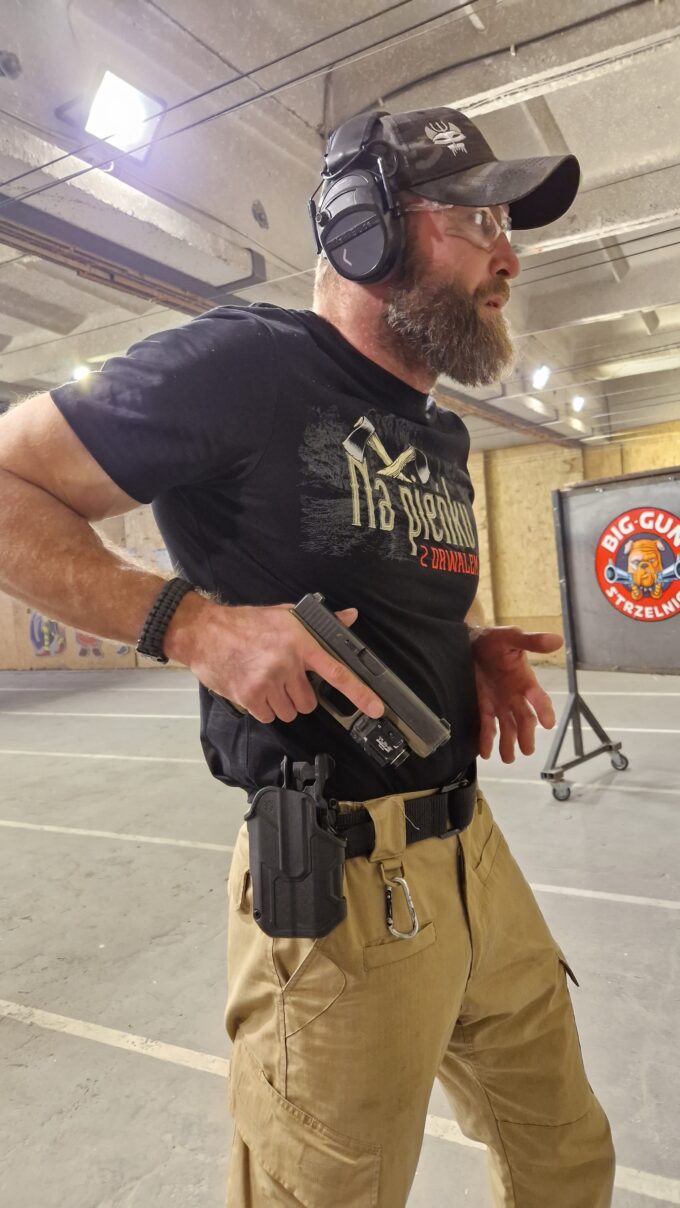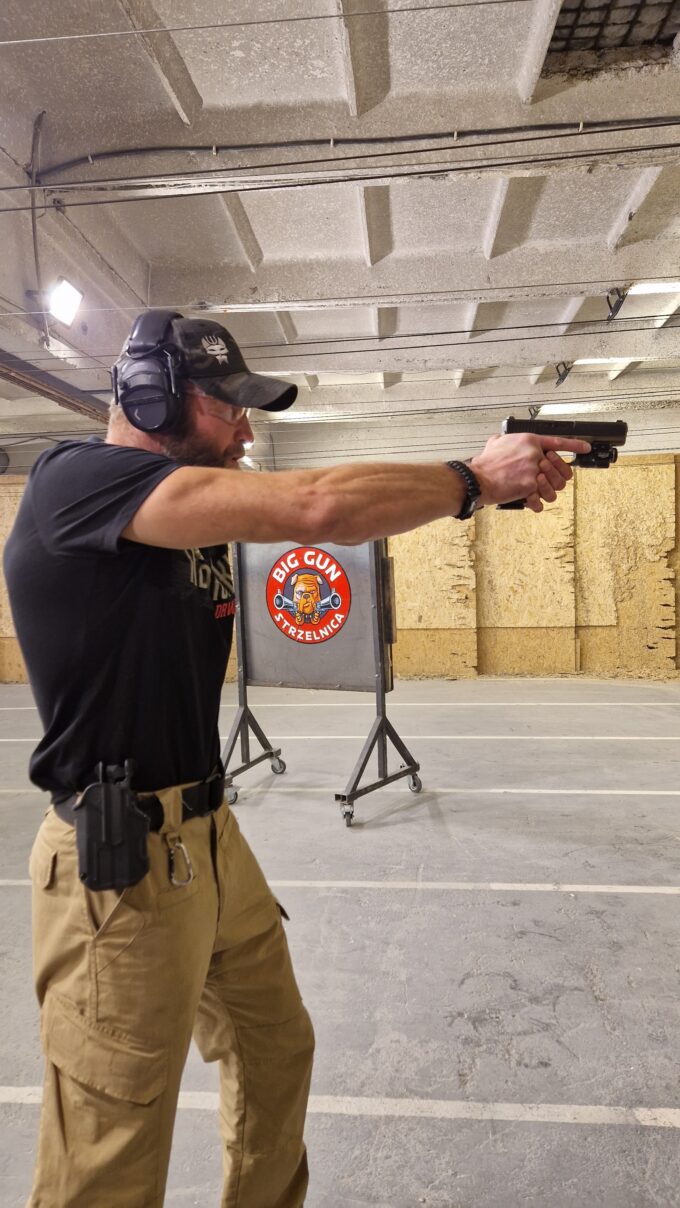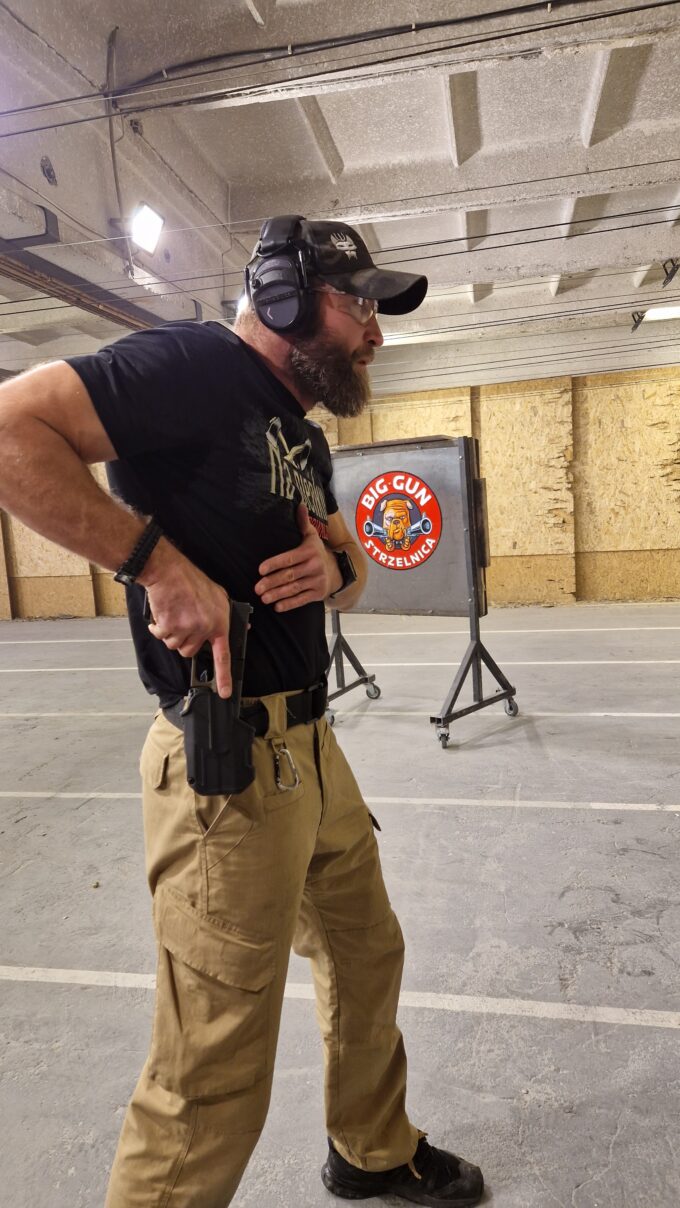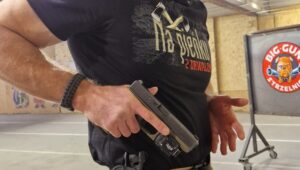Holster: What is it and why do you need it?
According to dictionary definitions, a holster is a type of cover used to carry a pistol or revolver. It allows for the convenient carrying of a weapon in an easily accessible place, enabling quick retrieval. Holsters can vary significantly in terms of the materials they are made from and the way they are worn. More information on this topic can be found in another article (in Polish). Today, however, we will focus on two outside waistband (OWB) holster models designated by the manufacturer as “rated for duty use,” meaning they are primarily designed to withstand the rigors of military and police use.
T-Series Level 2 i T-Series Level 3 Duty Holster (RDS)
We will now discuss two holster models: the Blackhawk T-Series Level 3 Duty, Light Bearing Red Dot Sight Holster (RDS), and the T-Series Level 2 Light Bearing Holster. Below are some key details from the manufacturer.
Level 3 Duty (RDS)
- Available holster models for flashlights Streamlight™ TLR 1, 2, 7, and 8, as well as Surefire™ X300.
- Compatible with Trijicon RMR/SRO, Leupold DeltaPoint Pro, Sig Romeo 1 Pro, Bushnell RXS-250, and similar-sized optics.
- The rotating dust cover provides additional protection for the optics against impacts and debris (the dust cover can be removed if needed).
- Suitable for: Glock 17/19/22/23/31/32/45/47 with TLR 7/8 flashlight, Glock 17/19/22/23/31/32/45/47 with TLR 1/2 flashlight, Glock 17/19/22/23/31/32/44/45/47 with Surefire X300 flashlight, Glock 22 gen5, S&W without safety, H&K VP9 with TLR1/2 flashlight, Sig Sauer P320 cal 9mm/.40 with TLR 1/2 flashlight.
Level 2
- Includes a quick double release (QDR) mechanism attached to the holster.
- Made from ultra-durable injection-molded polymer: strong and lightweight.
- Suitable for: Glock 17/19/22/23/31/32/45/47 with TLR 7/8 flashlight, Sig Sauer P320/250/M17/M18 with TLR 7/8 flashlight.
Multifit Holsters
The distinguishing feature of Blackhawk holsters under testing is primarily the Multifit system, which permits using them with multiple pistol models. In general, holsters are tailored to fit the slide and frame of a firearm, but in this case, the main fitting components adhere to the flashlight, enabling the use of one system with multiple firearm models. Transferring the flashlight to a different gun is straightforward, and you are ready to operate without the need for extensive adjustments (there is one screw located at the height of the flashlight).
Apart from financial considerations, not having to purchase a separate holster for each pistol model in our arsenal deals with the issue of muscle memory. Muscle memory developed with a particular type of equipment is of paramount importance for efficient and quick weapon retrieval from the holster. The hand consistently returns to the same spot on the hip, the finger always lands on the safety lever, and the weapon is drawn from the holster with the same practiced motion.
The main issue with multi-model holsters is the imprecise fit of the firearm inside the holster. It’s extremely frustrating when the pistol rattles with every step. Firstly, it makes us noticeable from a distance, and secondly, an unstable weapon can simply fall out in the least expected situation. If there’s a safety mechanism available, these subtle, repetitive movements can displace the safety lever. In the Multifit holsters case, on the other hand, we can be sure that the weapon won’t shift while running or changing shooting positions because the holster is precisely fitted to the interchangeable element, the flashlight.


Construction, craftsmanship, and purpose
As mentioned earlier, Blackhawk holsters are duty-ready models. This means that their primary purpose is to withstand challenging conditions, providing full protection for the firearm against damage and preventing it from falling out or being taken by a third party. The construction of the holster leaves no doubt that it is built to endure everything. It is very robust, with thick walls, and all the places where screws are inserted have additional reinforcements and a retention mechanism unlocked by a lever located under the thumb. The entire holster is made of durable injection-molded polymer.
The size of the holster makes it only suitable for wearing on a duty belt. The very thick and bulky belt attachment is challenging to conceal. Additionally, it cannot be detached; you need to pull the belt through the loop, so it’s convenient to configure the equipment once and use it that way. Furthermore, it shifts the holster below the hip, facilitating the drawing of the weapon. It’s also possible to add a thigh strap for stabilizing the holster, which is angular and protrudes significantly from the hip (at its widest point, from the attachment to the retention system, it extends almost 10 cm). In this configuration, concealed carry of the weapon is definitely not possible, but such setup is designed to facilitate the quick retrieval of a well-secured backup weapon in a situation where the rifle fails.
In the RDS model, despite its size, it would be worthwhile to add a spacer element because the thickness of the components did not leave me with enough space for my thumb to press the release adequately. It’s not absolutely necessary, but even a shirt sticking out from under the pants sometimes hindered me in positioning my hand on the pistol grip and placing my thumb on the release. If we add a second layer of clothing, the problem may become more pronounced.
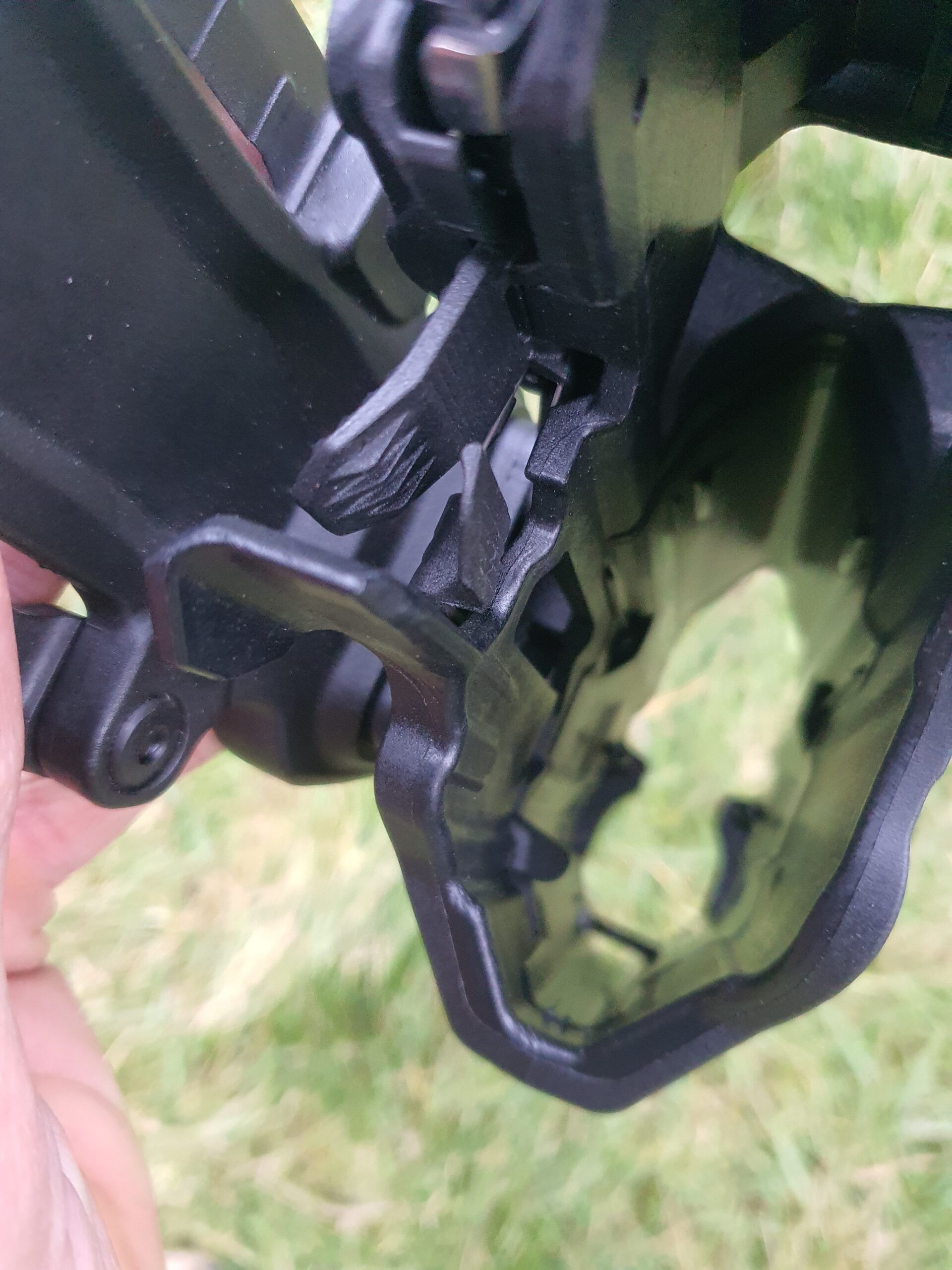
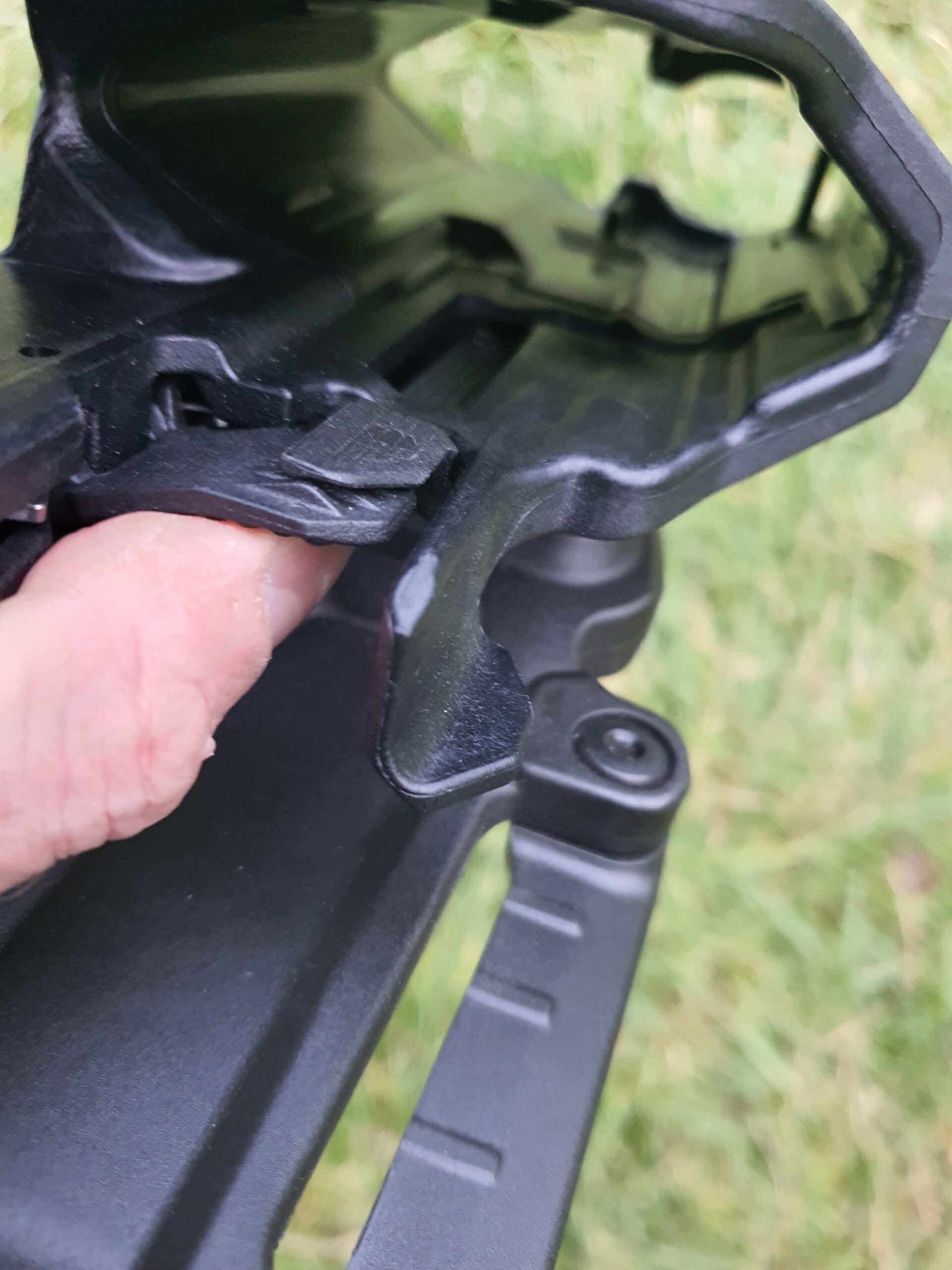
The RDS has a dual unlocking lever system. The first one drops the external cover that conceals the top of the slide, while the second one retracts the latch that secures the pistol to the flashlight inside. Both work on torsion springs and overlap each other. This means that by pressing the external lever, we release the rear slide cover, and with the same lever, we press the second lever that retracts the pin securing the weapon in the holster. With a single, firm press, we completely unlock the firearm – a very convenient and efficient solution. The levers are thickly encased with polymer covers, which should protect them from mechanical damage. Additionally, the holster has an elevation that completely shields the red dot sight and is also equipped with an extra flap that covers the rear of the optic, providing protection against dirt.
The T-series Level 2 Compact (L2C) holster is essentially a shortened model of the RDS. It lacks protection for the red dot sight, although it is heavily cut out, so there is no problem using a pistol equipped with this feature. Additionally, it has only one lever for unlocking the internal latch that secures the pistol. This version is equipped with a detachable quick dual release (QDR) belt loop. This is a very convenient solution for people who do not use a single tactical belt and need to switch holsters.

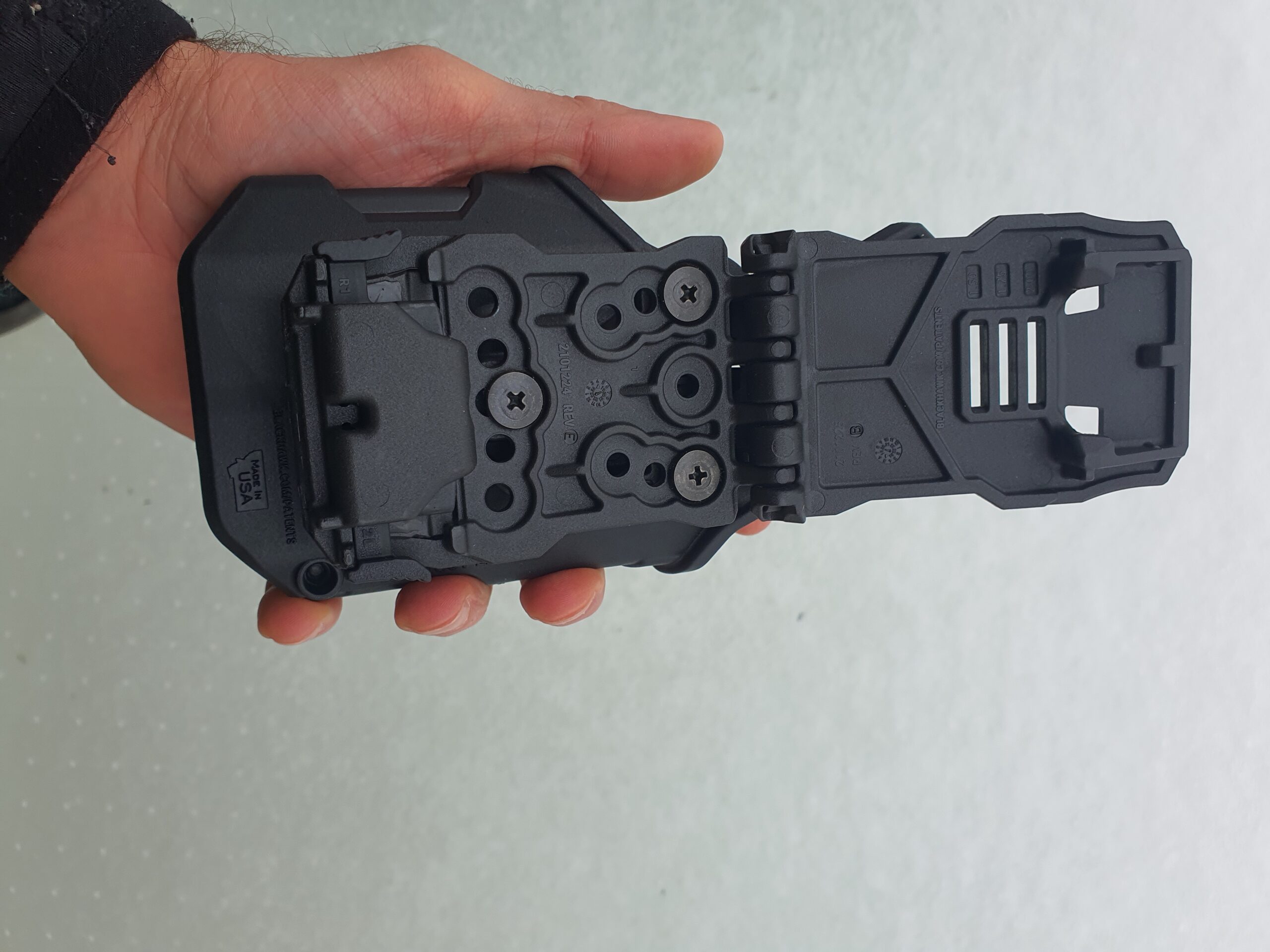
The mount itself, like the rest of it, is robust. The double latch, released by pressing the buttons on the sides, holds very securely. There are no loose parts or rattling when moving. However, the placement of this mount makes the holster sit high on the belt, and when reaching for the weapon, you need to position your hand high on the hip to get a solid grip on the pistol. It’s definitely a more compact solution, and with thicker outer clothing, you can conceal the weapon so that it doesn’t stand out, but it’s still not the best option for a low-profile carry.
In both versions of the Blackhawk holster, in the event of contamination, it’s essential to check the cleanliness of the safety mechanism. Sand, mud, or small stones that get under the plate (or both plates in the RDS model) can block the lever in the open position, causing the safety to simply not function. However, this is the nature of equipment with moving parts designed to operate in challenging conditions. They need to be maintained, and in return, they will provide smooth operation.
How do they perform in practice?
During use, I found the Blackhawk RDS holster model more to my liking. First and foremost, the holster with the extended mount sits lower on the hip, making it much easier for me to position my hand for a quick draw. Of course, it’s not a problem to purchase accessories, additional belt mounts, MOLLE attachments, and such, which will allow you to create an all-in-one holster setup.
With the extended mount of the RDS, it protrudes more from the hip, which is very helpful for positioning the hand on the pistol grip and thumb on the retention lever while wearing gloves. After just a few attempts, I instinctively pressed the lever without searching for it, and the weapon smoothly went into action. The latch consistently retracted each time, and there were no instances of it getting stuck halfway nor causing any hang-ups. Regarding the holster itself, the opening of the RDS is very wide, and you could say it acts like a funnel. This means you would have to make a serious effort to misalign the firearm when holstering it after shooting. The Level 2 Compact fares slightly worse in that aspect: there is no expansion for the red dot sight, although, as I mentioned earlier, a pistol with a red dot sight can easily fit into it as well.
I really liked the dust cover for optics in the RDS model. During dynamic shooting, when we often change shooting positions, it’s quite easy to get the holster and the firearm dirty. In this case, the well-encased pistol is well-covered, minimizing the amount of dirt getting inside, which could lead to the malfunction of the safety and expose the weapon to malfunctions. The encased red dot sight is perfectly protected against mechanical damage, such as hitting against obstacles or the ground while lying down or crawling.
The flap covering the sight proves its worth during light rain, leaving the sight window clean. Raindrops on the glass can be a nuisance for shooters in rainy conditions because they blur the dot, practically eliminating the possibility of accurate shooting. Of course, the cover is not perfectly waterproof, so in heavy downpours, water will certainly get inside. However, I believe that such a cover is definitely better than none.
Blackhawk is clearly targeting an audience within the broad realm of uniformed services. Their holsters and holster accessories are primarily robust, with a focus on durability and weapon safety at the expense of weight, ergonomics, comfort, or aesthetics. Additional features like firearm retention mechanisms, modular components such as thigh panels, or attachment sockets are sturdy and straightforward, primarily aimed at reliability and ease of use. However, users need to get accustomed to these solutions and train their muscle memory. In sporting applications, only enthusiasts of military-style designs may appreciate these products, as there are many custom-made holsters on the market that offer agility and quick deployment. On the other hand, when it comes to working in tough conditions, Blackhawk holsters prove themselves, and their purchase is worth considering. They facilitate instinctive use of firearm controls, drawing, and holstering, and with this level of craftsmanship, you can expect the equipment to operate reliably for an extended period.


